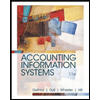Refer to Exhibit 6.5 to identify the nine types of audit procedures used as part of the audit evidence-gathering process. Following is a list of audit procedures performed. For each procedure (listed as (a) through (p)), classify the evidence gathered according to one (or more, if applicable) of the audit procedure types indicated in Exhibit 6.5 and identify the assertion(s) being tested. Organize your answer as follows: Procedure Type of Procedure Assertion Tested a. b. a. Calculate the ratio of cost of goods sold to sales as a test of overall reasonableness of the balance for cost of goods sold. b. Trace a sales transaction from the origination of an incoming sales order to the shipment of merchandise to an invoice and to the proper recording in the sales journal. c. Test the accuracy of the sales invoice by multiplying the number of items shipped by the authorized price list to determine extended cost. Foot the total and reconcile it with the total invoiced. d. Select recorded sales invoices and trace the corresponding shipping documents to verify the existence of goods shipped. e. Examine canceled checks returned with the client’s January bank statement as support of outstanding checks listed on the client’s December year-end bank reconciliation. f. Perform inspection and independently count a sample of the client’s marketable securities held in a safe deposit box. g. Tour the plant to determine that a major equipment acquisition was received and is in working condition. h. Review a lease contract to determine the items it covers and its major provisions. i. Request a statement from a major customer as to its agreement or disagreement with a year-end receivable balance shown to be due to the audit client. j. Develop a spreadsheet to calculate an independent estimate of the client’s warranty liability (reserve) based on production data and current warranty repair expenditures. k. Meet with the client’s internal legal department to determine its assessment of the potential outcome of pending litigation regarding a patent infringement suit against the company. l. Review all major past-due accounts receivable with the credit manager to determine whether the client’s allowance for doubtful accounts is adequate. m. Make test counts of inventory items counted by client personnel. n. Obtain information about the client’s processing system and associated controls by asking the client’s personnel to fill out a questionnaire. o. Examine board of directors’ minutes for the approval of a major bond issued during the year. p. Have the client’s outside law firm send a letter directly to the auditor providing a description of any differences between the lawyer’s assessment of litigation and that of the client.
6-48.
LO 3
Refer to Exhibit 6.5 to identify the nine types of
Procedure Type of Procedure Assertion Tested
a.
b.
a. Calculate the ratio of cost of goods sold to sales as a test of overall reasonableness of the balance for cost of goods sold.
b. Trace a sales transaction from the origination of an incoming sales order to the shipment of merchandise to an invoice and to the proper recording in the sales journal.
c. Test the accuracy of the sales invoice by multiplying the number of items shipped by the authorized price list to determine extended cost. Foot the total and reconcile it with the total invoiced.
d. Select recorded sales invoices and trace the corresponding shipping documents to verify the existence of goods shipped.
e. Examine canceled checks returned with the client’s January bank statement as support of outstanding checks listed on the client’s December year-end bank reconciliation.
f. Perform inspection and independently count a sample of the client’s marketable securities held in a safe deposit box.
g. Tour the plant to determine that a major equipment acquisition was received and is in working condition.
h. Review a lease contract to determine the items it covers and its major provisions.
i. Request a statement from a major customer as to its agreement or disagreement with a year-end receivable balance shown to be due to the audit client.
j. Develop a spreadsheet to calculate an independent estimate of the client’s warranty liability (reserve) based on production data and current warranty repair expenditures.
k. Meet with the client’s internal legal department to determine its assessment of the potential outcome of pending litigation regarding a patent infringement suit against the company.
l. Review all major past-due
m. Make test counts of inventory items counted by client personnel.
n. Obtain information about the client’s processing system and associated controls by asking the client’s personnel to fill out a questionnaire.
o. Examine board of directors’ minutes for the approval of a major bond issued during the year.
p. Have the client’s outside law firm send a letter directly to the auditor providing a description of any differences between the lawyer’s assessment of litigation and that of the client.
Trending now
This is a popular solution!
Step by step
Solved in 2 steps






